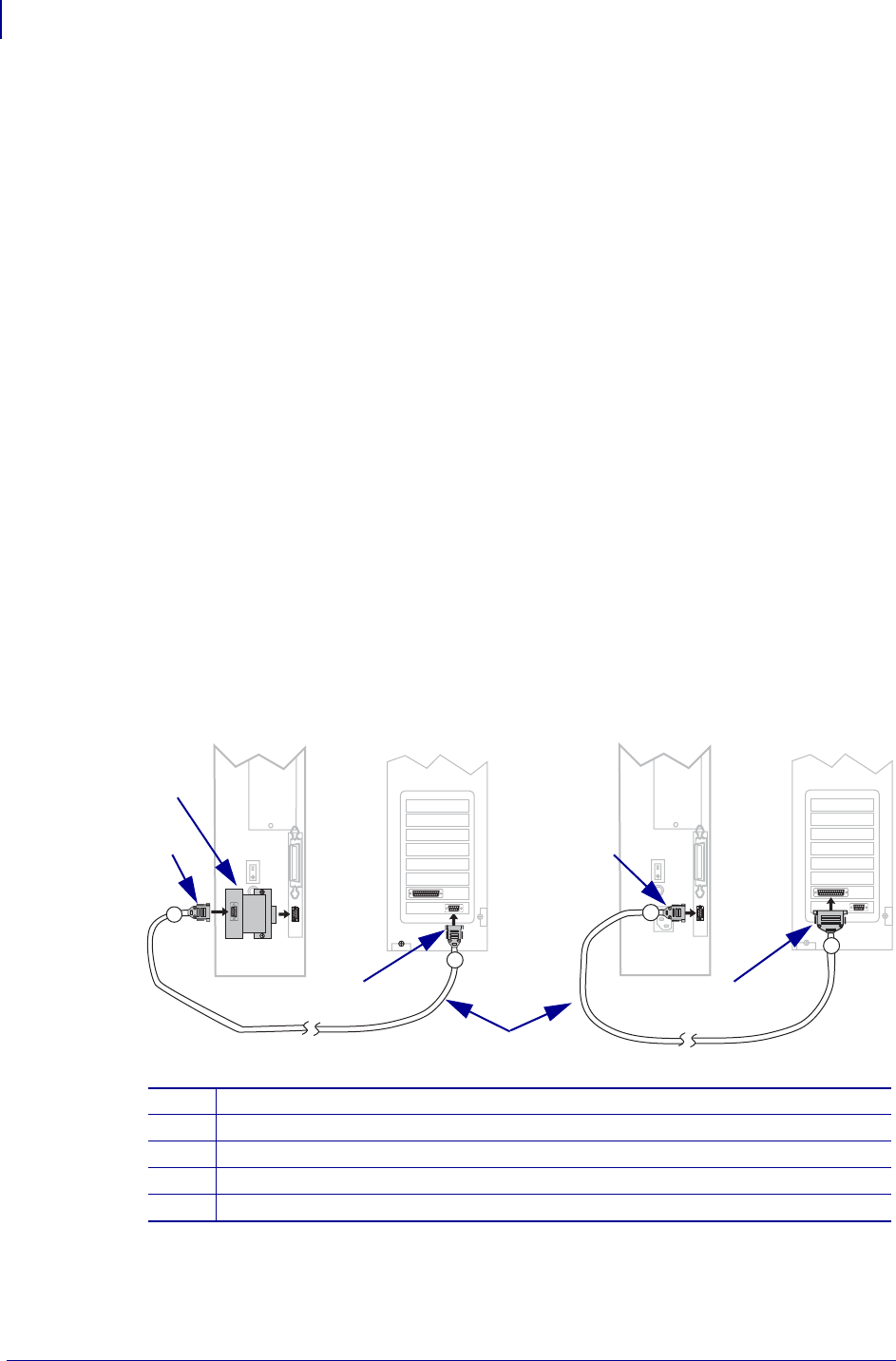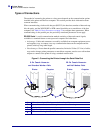
Printer Setup
Select a Communication Interface
20
11342L-001 Rev. A 105SL User Guide 6/30/06
Types of Connections
The method of connecting the printer to a data source depends on the communication options
installed in the printer and the host computer. This section provides basic information about
common interfaces.
When communicating via the serial data port (RS-232), the baud rate, number of data and stop
bits, the parity, and the XON/XOFF or DTR control should be set to match those of the host
computer. See Table 9, Printer Parameters on page 79 to configure these parameters. When
communicating via the parallel port, the previously mentioned parameters do not apply.
RS-232 Serial A serial communication method consisting of data and control signals;
available as a standard feature on most personal computers and other hosts.
• Advantages: Cables and connectors are readily available from computer equipment stores
and suppliers; easy to connect; two-way communication between the computer and the
printer; relatively long cable length.
• Disadvantages: Slower than the parallel connection; limited to 50 feet (15.24 m) of cable;
may need to change printer parameters to match host computer; need to use a null-modem
adaptor to connect to the printer if using a standard modem cable.
Figure 6 • Connecting the Printer through the Serial Data Port
1
Null-modem adaptor (if using a standard modem cable)
2
9-pin male connector, connected to printer or null-modem adaptor
3
9-pin female connector, connected to computer
4
25-pin female connector, connected to computer
5
Maximum cable length = 50 ft. (15 m)
2
1
3
9-Pin Female Connector
and Standard Modem Cable
25-Pin Female Connector
and Null Modem Cable
Printer Computer Printer Computer
4
2
5


















